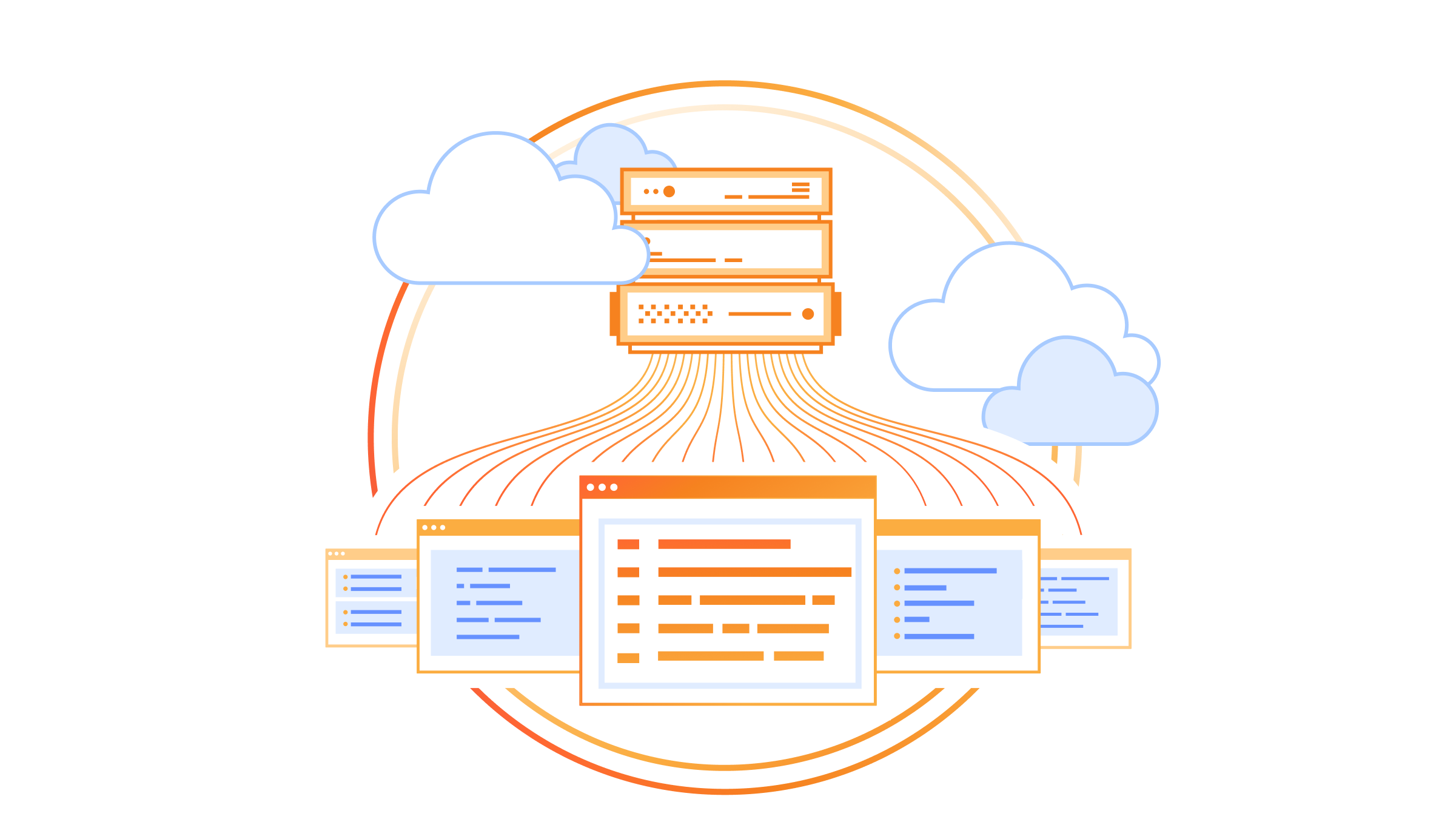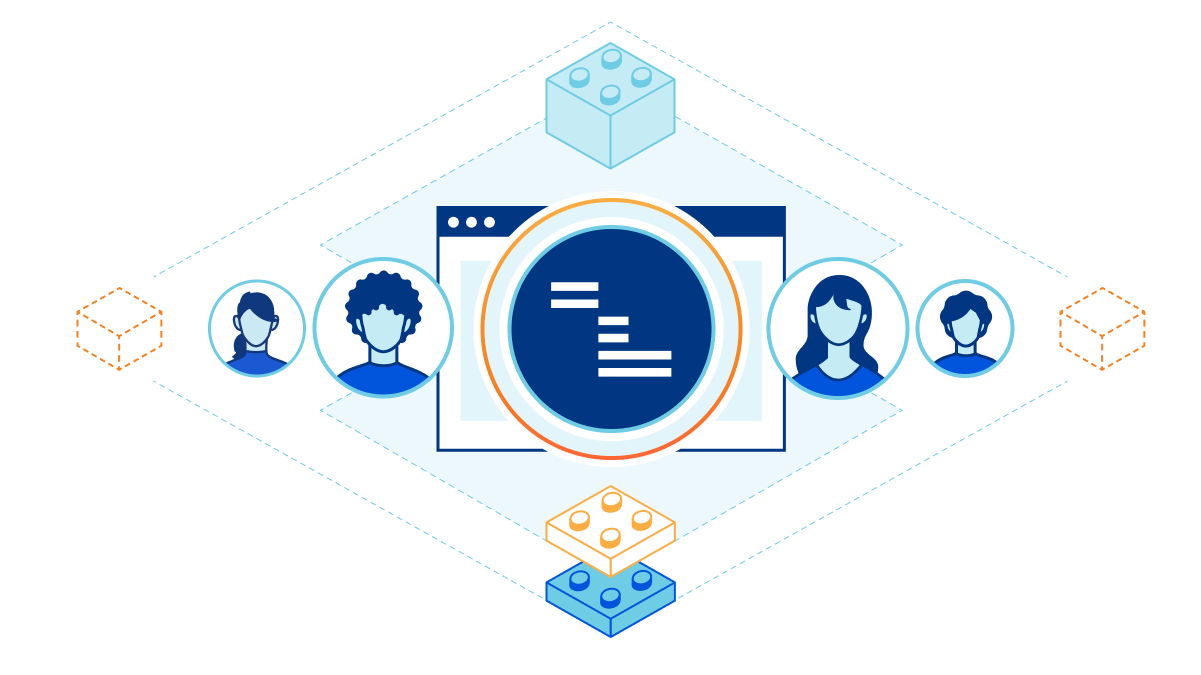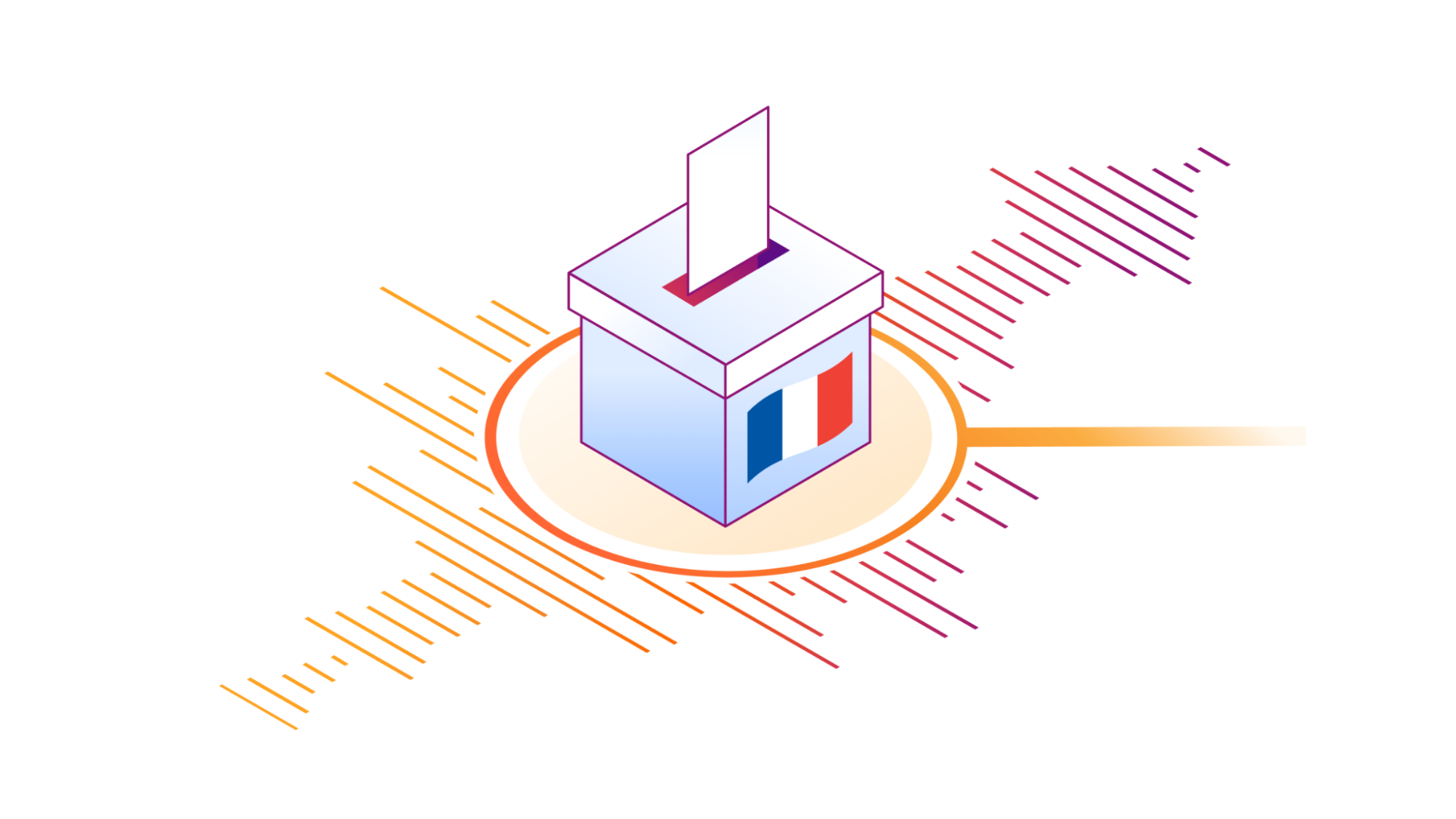Making WAF ML models go brrr: saving decades of processing time

We made our WAF Machine Learning models 5.5x faster, reducing execution time by approximately 82%, from 1519 to 275 microseconds! Read on to find out how we achieved this remarkable improvement.
WAF Attack Score is Cloudflare's machine learning (ML)-powered layer built on top of our Web Application Firewall (WAF). Its goal is to complement the WAF and detect attack bypasses that we haven't encountered before. This has proven invaluable in catching zero-day vulnerabilities, like the one detected in Ivanti Connect Secure, before they are publicly disclosed and enhancing our customers' protection against emerging and unknown threats.
Since its launch in 2022, WAF attack score adoption has grown exponentially, now protecting millions of Internet properties and running real-time inference on tens of millions of requests per second. The feature's popularity has driven us to seek performance improvements, enabling even broader customer use and enhancing Internet security.
In this post, we will discuss the performance optimizations we've implemented for our WAF ML product. We'll guide you through specific code examples and benchmark numbers, demonstrating how these enhancements have significantly improved our system's efficiency. Additionally, we'll share the impressive latency reduction numbers observed after the rollout.
Before diving Continue reading
Meta Llama 3.1 now available on Workers AI

At Cloudflare, we’re big supporters of the open-source community – and that extends to our approach for Workers AI models as well. Our strategy for our Cloudflare AI products is to provide a top-notch developer experience and toolkit that can help people build applications with open-source models.
We’re excited to be one of Meta’s launch partners to make their newest Llama 3.1 8B model available to all Workers AI users on Day 1. You can run their latest model by simply swapping out your model ID to @cf/meta/llama-3.1-8b-instruct or test out the model on our Workers AI Playground. Llama 3.1 8B is free to use on Workers AI until the model graduates out of beta.
Meta’s Llama collection of models have consistently shown high-quality performance in areas like general knowledge, steerability, math, tool use, and multilingual translation. Workers AI is excited to continue to distribute and serve the Llama collection of models on our serverless inference platform, powered by our globally distributed GPUs.
The Llama 3.1 model is particularly exciting, as it is released in a higher precision (bfloat16), incorporates function calling, and adds support across 8 languages. Having multilingual support built-in means that you can Continue reading
Countdown to Paris 2024 Olympics: France leads in web interest

The 2024 Summer Olympics, or Paris 2024, is set from July 26 to August 11 in France. The opening ceremony, scheduled for Friday, July 26 at 17:30, will take place for the first time not in a stadium but in the open space of the Jardins du Trocadéro by the Seine River in Paris. We’ll monitor relevant Internet insights throughout the event, but here we analyze some pre-event trends, from the popularity of Olympic websites by country to the increase in Olympics-related spam and malicious emails.
This year’s Olympics will host 329 events across 32 sports, featuring the debut of breakdancing as an Olympic event and the return of skateboarding, sport climbing, and surfing from 2020. Similar to our 2024 elections coverage, we will maintain a Paris 2024 Olympics report on Cloudflare Radar, updating it as significant Internet trends related to the event emerge.
From our 1.1.1.1 resolver, DNS trends show heightened interest in the Olympics, especially from France. 24% of DNS requests for official Olympic-related websites came from the host country, followed by the United Kingdom and the United States, with 20% and 17% respectively.

Here’s the breakdown of countries responsible for at Continue reading
Exploring Internet traffic during the 2024 U.S. Republican National Convention

Internet traffic typically mirrors human behavior, with significant fluctuations during large political events. This comes during a time when the United States is in election mode, as political campaigns are in full swing and candidates for various offices, primaries and caucuses make their case to voters and debates are being held. This week, the Republican National Convention was hosted in Milwaukee, Wisconsin from July 15 to 18, 2024. We examined traffic shifts and cyberattacks since June 2024 to see how these events have impacted the Internet.
Attacks on political related websites
Cyberattacks are a constant threat, and aren't necessarily driven by elections. With that said, notable trends can often be observed, and we’ve seen before how specific geopolitical events can trigger online attacks. For example, we saw cyberattacks at the start of the war in Ukraine to more recently in the Netherlands, when the June 2024 European elections coincided with cyberattacks on Dutch political-related websites that lasted two days — June 5th and 6th. The main DDoS (Distributed Denial of Service attack) attack on June 5, the day before the Dutch election, reached 73,000 requests per second (rps).
Shifting our focus to the United States in particular, Continue reading
Eliminating hardware with Load Balancing and Cloudflare One

In 2023, Cloudflare introduced a new load balancing solution supporting Local Traffic Management (LTM). This year, we took it a step further by introducing support for layer 4 load balancing to private networks via Spectrum. Now, organizations can seamlessly balance public HTTP(S), TCP, and UDP traffic to their privately hosted applications. Today, we’re thrilled to unveil our latest enhancement: support for end-to-end private traffic flows as well as WARP authenticated device traffic, eliminating the need for dedicated hardware load balancers! These groundbreaking features are powered by the enhanced integration of Cloudflare load balancing with our Cloudflare One platform, and are available to our enterprise customers. With this upgrade, our customers can now utilize Cloudflare load balancers for both public and private traffic directed at private networks.
Cloudflare Load Balancing today
Before discussing the new features, let's review Cloudflare's existing load balancing support and the challenges customers face.
Cloudflare currently supports four main load balancing traffic flows:
- Internet-facing load balancers connecting to publicly accessible endpoints at layer 7, supporting HTTP(S).
- Internet-facing load balancers connecting to publicly accessible endpoints at layer 4 (Spectrum), supporting TCP and UDP services
- Internet-facing load balancers connecting to private endpoints at layer 7 HTTP(S) via Cloudflare Tunnels.
- Continue reading
Q2 2024 Internet disruption summary

Cloudflare’s network spans more than 320 cities in over 120 countries, where we interconnect with over 13,000 network providers in order to provide a broad range of services to millions of customers. The breadth of both our network and our customer base provides us with a unique perspective on Internet resilience, enabling us to observe the impact of Internet disruptions. Thanks to Cloudflare Radar functionality released earlier this year, we can explore the impact from a routing perspective, as well as a traffic perspective, at both a network and location level.
As we have seen in previous years, nationwide exams take place across several MENA countries in the second quarter, and with them come government directed Internet shutdowns. Cable cuts, both terrestrial and submarine, caused Internet outages across a number of countries, with the ACE submarine cable being a particular source of problems. Maintenance, power outages, and technical problems also disrupted Internet connectivity, as did unknown issues. And as we have frequently seen in the two-plus years since the conflict began, Internet connectivity in Ukraine suffers as a result of Russian attacks.
As we have noted in the past, this post is intended as a summary overview Continue reading
Application Security report: 2024 update
Over the last twelve months, the Internet security landscape has changed dramatically. Geopolitical uncertainty, coupled with an active 2024 voting season in many countries across the world, has led to a substantial increase in malicious traffic activity across the Internet. In this report, we take a look at Cloudflare’s perspective on Internet application security.
This report is the fourth edition of our Application Security Report and is an official update to our Q2 2023 report. New in this report is a section focused on client-side security within the context of web applications.
Throughout the report we discuss various insights. From a global standpoint, mitigated traffic across the whole network now averages 7%, and WAF and Bot mitigations are the source of over half of that. While DDoS attacks remain the number one attack vector used against web applications, targeted CVE attacks are also worth keeping an eye on, as we have seen exploits as fast as 22 minutes after a proof of concept was released.
Focusing on bots, about a third of all traffic we observe is automated, and of that, the vast majority (93%) is not generated by bots in Cloudflare’s verified list and is potentially malicious.
API traffic Continue reading
Euro 2024’s impact on Internet traffic: a closer look at finalists Spain and England

National team sports unite countries, and football (known as “soccer” in the US) is the world’s most popular sport, boasting approximately 3.5 billion fans globally. The UEFA Euro 2024, running from June 14 to July 14, 2024, significantly impacts Internet traffic across participating European nations. This blog post focuses on the two finalists, Spain and England, and comes after an initial post we published during the first week of the tournament.
Analyzing traffic patterns reveals distinct high-level trends. Spain saw the most significant drops in Internet traffic during games against major teams and former champions such as Italy (the defending champion), Germany, and France. In contrast, England’s games had crucial moments towards the end, leading to the largest traffic reductions in the UK, especially during the knockout stages.
For context, as previously mentioned, football games like the Super Bowl, differ from other events such as elections. When major teams or national squads play, especially in matches that captivate many viewers, Internet traffic often drops. This is particularly true if the game is broadcast on a national TV channel. During such broadcasts, people tend to focus more on their TV sets, relying on the traditional broadcast signal Continue reading
Cloudflare Zaraz adds support for server-side rendering of X and Instagram embeds

We are thrilled to announce Cloudflare Zaraz support of server-side rendering of embeds, featuring two Managed Components: X and Instagram. You can now use Cloudflare Zaraz to effortlessly embed posts from X or Instagram on your website in a performant, privacy-preserving, and secure way. Many traditional tag managers or customer data platforms rely heavily on third-party JavaScript and cookies to embed content, leading to concerns about privacy and performance. In contrast, we designed our solution to work without loading any third-party JavaScript or cookies, and furthermore to completely eliminate communication between the browser and third-party servers.
Starting today, you can use Cloudflare Zaraz not only for server-side data reporting to conventional marketing and analytics tools but also for server-side content rendering on your website. We are excited to pave the way with tools that enhance security, protect user privacy, and improve performance. Take a look at it:
Embed social media content without sacrificing security and speed
Since social media platforms emerged, we have become more and more familiar with seeing posts being embedded on websites, from showcasing user testimonials on product pages to featuring posts from reporters and politicians in news articles or blogs. Traditionally, this process has involved integrating Continue reading
DDoS threat report for 2024 Q2

Welcome to the 18th edition of the Cloudflare DDoS Threat Report. Released quarterly, these reports provide an in-depth analysis of the DDoS threat landscape as observed across the Cloudflare network. This edition focuses on the second quarter of 2024.
With a 280 terabit per second network located across over 230 cities worldwide, serving 19% of all websites, Cloudflare holds a unique vantage point that enables us to provide valuable insights and trends to the broader Internet community.
Key insights for 2024 Q2
- Cloudflare recorded a 20% year-over-year increase in DDoS attacks.
- 1 out of every 25 survey respondents said that DDoS attacks against them were carried out by state-level or state-sponsored threat actors.
- Threat actor capabilities reached an all-time high as our automated defenses generated 10 times more fingerprints to counter and mitigate the ultrasophisticated DDoS attacks.
View the interactive version of this report on Cloudflare Radar.
Quick recap - what is a DDoS attack?
Before diving in deeper, let's recap what a DDoS attack is. Short for Distributed Denial of Service, a DDoS attack is a type of cyber attack designed to take down or disrupt Internet services, such as websites or mobile apps, making them unavailable Continue reading
RADIUS/UDP vulnerable to improved MD5 collision attack
The MD5 cryptographic hash function was first broken in 2004, when researchers demonstrated the first MD5 collision, namely two different messages X1 and X2 where MD5(X1) = MD5 (X2). Over the years, attacks on MD5 have only continued to improve, getting faster and more effective against real protocols. But despite continuous advancements in cryptography, MD5 has lurked in network protocols for years, and is still playing a critical role in some protocols even today.
One such protocol is RADIUS (Remote Authentication Dial-In User Service). RADIUS was first designed in 1991 – during the era of dial-up Internet – but it remains an important authentication protocol used for remote access to routers, switches, and other networking gear by users and administrators. In addition to being used in networking environments, RADIUS is sometimes also used in industrial control systems. RADIUS traffic is still commonly transported over UDP in the clear, protected only by outdated cryptographic constructions based on MD5.
In this post, we present an improved attack against MD5 and use it to exploit all authentication modes of RADIUS/UDP apart from those that use EAP (Extensible Authentication Protocol). The attack allows a Monster-in-the-Middle (MitM) with access to RADIUS traffic Continue reading
French elections: political cyber attacks and Internet traffic shifts

The 2024 French legislative election runoff on July 7 yielded surprising results compared to the first round on June 30, with the New Popular Front (NPF) gaining the most seats, followed by French President Macron’s Ensemble party, and the National Rally. Coalition negotiations will follow. In this post, we examine the ongoing online attacks against French political parties and how initial election predictions at 20:00 local time led to a noticeable drop in France’s Internet traffic.
This blog post is part of a series tracking the numerous elections of 2024. We have covered elections in South Africa, India, Iceland, Mexico, the European Union, the UK and also the 2024 US presidential debate. We also continuously update our election report on Cloudflare Radar.
Let’s start with the attacks, and then move on to the Internet traffic trends.
Political parties under attack
As we highlighted last week, the first round of the French elections saw specific DDoS (Distributed Denial of Service) attacks targeting French political party websites. While online attacks are common and not always election-related, recent activities in France, the Netherlands, and the UK confirm that DDoS attacks frequently target political parties during election Continue reading
UK election day 2024: traffic trends and attacks on political parties

The 2024 UK general election, the first since Brexit officially began (January 31, 2020) and after 14 years of Conservative leadership, saw the Labour Party secure a majority. This blog post examines Internet traffic trends and cyberattack activity on election day, highlighting notable declines in traffic during the afternoon and evening as well as a DDoS attack on a political party shortly after polls closed.
For context, 2024 is considered “the year of elections,” with elections taking place in over 60 countries. We’ve covered elections in South Africa, India, Iceland, Mexico, the European Union, France, and also the 2024 US presidential debate. We also continuously update our election report on Cloudflare Radar.
The UK’s snap election on Thursday, July 4, 2024, typical of British Thursday weekday elections, contrasts with weekend elections in other countries. Polling stations were open from 07:00 to 22:00.
Generally, election days do not result in drastic changes to Internet traffic. Traffic typically dips during voting hours but not as sharply as during major events like national holidays, and rises in the evening as results are announced.
On July 4, 2024, traffic initially rose slightly from the previous week, then fell around noon Continue reading
Cloudflare 1.1.1.1 incident on June 27, 2024

Introduction
On June 27, 2024, a small number of users globally may have noticed that 1.1.1.1 was unreachable or degraded. The root cause was a mix of BGP (Border Gateway Protocol) hijacking and a route leak.
Cloudflare was an early adopter of Resource Public Key Infrastructure (RPKI) for route origin validation (ROV). With RPKI, IP prefix owners can store and share ownership information securely, and other operators can validate BGP announcements by comparing received BGP routes with what is stored in the form of Route Origin Authorizations (ROAs). When Route Origin Validation is enforced by networks properly and prefixes are signed via ROA, the impact of a BGP hijack is greatly limited. Despite increased adoption of RPKI over the past several years and 1.1.1.0/24 being a signed resource, during the incident 1.1.1.1/32 was originated by ELETRONET S.A. (AS267613) and accepted by multiple networks, including at least one Tier 1 provider who accepted 1.1.1.1/32 as a blackhole route. This caused immediate unreachability for the DNS resolver address from over 300 networks in 70 countries was impacted, although the impact on the overall percentage of users was quite Continue reading
First round of French election: party attacks and a modest traffic dip
This post is also available in Français.

France is currently electing a new government through early legislative elections that began on Sunday, June 30, 2024, with a second round scheduled for July 7. In this blog, we show how Cloudflare blocked DDoS attacks targeting three different French political parties.
2024 has been dubbed “the year of elections,” with elections taking place in over 60 countries, as we have mentioned before (1, 2, 3). If you regularly follow the Cloudflare blog, you’re aware that we consistently cover election-related trends, including in South Africa, India, Iceland, Mexico, the European Union and the 2024 US presidential debate. We also continuously update our election report on Cloudflare Radar.
Recently in France, as in the early stages of the war in Ukraine and during EU elections in the Netherlands, political events have precipitated cyberattacks. In France, several DDoS (Distributed Denial of Service attack) attacks targeted political parties involved in the elections over the past few days, with two parties hit just before the first round and another on election day itself.

The first political party, shown in yellow in the previous chart, experienced a DDoS attack on Continue reading
Declare your AIndependence: block AI bots, scrapers and crawlers with a single click

To help preserve a safe Internet for content creators, we’ve just launched a brand new “easy button” to block all AI bots. It’s available for all customers, including those on our free tier.
The popularity of generative AI has made the demand for content used to train models or run inference on skyrocket, and, although some AI companies clearly identify their web scraping bots, not all AI companies are being transparent. Google reportedly paid $60 million a year to license Reddit’s user generated content, Scarlett Johansson alleged OpenAI used her voice for their new personal assistant without her consent, and most recently, Perplexity has been accused of impersonating legitimate visitors in order to scrape content from websites. The value of original content in bulk has never been higher.
Last year, Cloudflare announced the ability for customers to easily block AI bots that behave well. These bots follow robots.txt, and don’t use unlicensed content to train their models or run inference for RAG applications using website data. Even though these AI bots follow the rules, Cloudflare customers overwhelmingly opt to block them.

We hear clearly that customers don’t want AI bots visiting their websites, and especially those that do Continue reading
How the first 2024 US presidential debate influenced Internet traffic and security trends

Key findings:
- The Biden vs. Trump debate influenced Internet traffic at the state level in the US, with drops in traffic as high as 17% (in Vermont) during the debate.
- Microblogging and video streaming platforms saw traffic changes during the debate.
- Trump-related sites, including donation platforms, gained much more traction than Biden’s during and after the debate.
- Emails with “Trump” in the subject had higher rates of spam and malicious content compared to those with “Biden.”
- No increase in cyberattacks during the debate, but frequent DDoS attacks targeted government and political sites in the preceding months.
Internet traffic ebbs and flows usually follow human patterns, and high visibility events that are broadcast on TV usually have an impact. Let’s take a look at the first of the 2024 United States presidential debates between the two major presumptive candidates, Joe Biden and Donald Trump, for the November presidential election.
2024 has been dubbed “the year of elections,” with elections taking place in over 60 countries, as we have mentioned before (1, 2, 3). We are regularly updating our election report on Cloudflare Radar, including analysis of recent elections in South Africa, India, Iceland, Mexico, Continue reading
Supporting Postgres Named Prepared Statements in Hyperdrive

Hyperdrive (Cloudflare’s globally distributed SQL connection pooler and cache) recently added support for Postgres protocol-level named prepared statements across pooled connections. Named prepared statements allow Postgres to cache query execution plans, providing potentially substantial performance improvements. Further, many popular drivers in the ecosystem use these by default, meaning that not having them is a bit of a footgun for developers. We are very excited that Hyperdrive’s users will now have access to better performance and a more seamless development experience, without needing to make any significant changes to their applications!
While we're not the first connection pooler to add this support (PgBouncer got to it in October 2023 in version 1.21, for example), there were some unique challenges in how we implemented it. To that end, we wanted to do a deep dive on what it took for us to deliver this.
Hyper-what?
One of the classic problems of building on the web is that your users are everywhere, but your database tends to be in one spot. Combine that with pesky limitations like network routing, or the speed of light, and you can often run into situations where your users feel the pain of having your Continue reading
Embedded function calling in Workers AI: easier, smarter, faster

Introducing embedded function calling and a new ai-utils package
Today, we’re excited to announce a novel way to do function calling that co-locates LLM inference with function execution, and a new ai-utils package that upgrades the developer experience for function calling.
This is a follow-up to our mid-June announcement for traditional function calling, which allows you to leverage a Large Language Model (LLM) to intelligently generate structured outputs and pass them to an API call. Function calling has been largely adopted and standardized in the industry as a way for AI models to help perform actions on behalf of a user.
Our goal is to make building with AI as easy as possible, which is why we’re introducing a new @cloudflare/ai-utils npm package that allows developers to get started quickly with embedded function calling. These helper tools drastically simplify your workflow by actually executing your function code and dynamically generating tools from OpenAPI specs. We’ve also open-sourced our ai-utils package, which you can find on GitHub. With both embedded function calling and our ai-utils, you’re one step closer to creating intelligent AI agents, and from there, the possibilities are endless.
Why Cloudflare’s AI platform?
OpenAI has been the gold Continue reading
Automatically replacing polyfill.io links with Cloudflare’s mirror for a safer Internet

polyfill.io, a popular JavaScript library service, can no longer be trusted and should be removed from websites.
Multiple reports, corroborated with data seen by our own client-side security system, Page Shield, have shown that the polyfill service was being used, and could be used again, to inject malicious JavaScript code into users’ browsers. This is a real threat to the Internet at large given the popularity of this library.
We have, over the last 24 hours, released an automatic JavaScript URL rewriting service that will rewrite any link to polyfill.io found in a website proxied by Cloudflare to a link to our mirror under cdnjs. This will avoid breaking site functionality while mitigating the risk of a supply chain attack.
Any website on the free plan has this feature automatically activated now. Websites on any paid plan can turn on this feature with a single click.

You can find this new feature under Security ⇒ Settings on any zone using Cloudflare.
Contrary to what is stated on the polyfill.io website, Cloudflare has never recommended the polyfill.io service or authorized their use of Cloudflare’s name on their website. We have asked them to remove the Continue reading